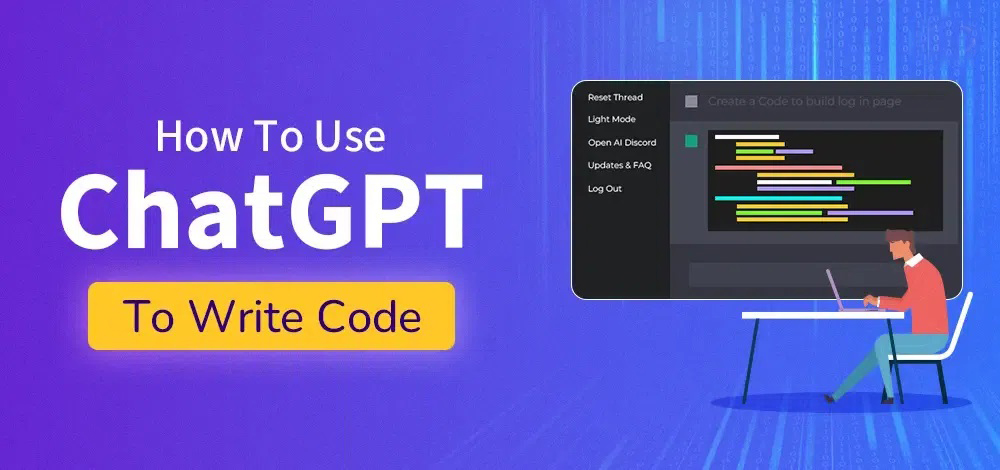
Introduction to ChatGPT in Programming
In recent years, artificial intelligence has made remarkable strides, notably within the realm of natural language processing. Among the AI models that have emerged, ChatGPT stands out as a transformative tool, particularly in the field of programming. By 2025, the relevance of ChatGPT in programming is expected to become even more pronounced, as developers increasingly seek to enhance their coding efficiency and creativity through AI assistance. This evolution of AI language models illustrates the growing intersection between human ingenuity and machine learning.
ChatGPT, designed by OpenAI, has the capability to understand and generate human-like text, making it exceptionally useful for various programming tasks. Its ability to interpret and respond to code-related queries allows programmers to engage in dynamic problem-solving. With its sophisticated algorithms, ChatGPT can assist in tasks such as code generation, debugging, and even offering explanations for complex programming concepts. By leveraging ChatGPT to write code, developers can significantly reduce their cognitive load, allowing them to focus on higher-level design and creative processes.
The benefits of integrating ChatGPT into programming are manifold. For one, it has the potential to accelerate the coding process by providing suggestions and templates, thus streamlining the workflow. Additionally, the tool encourages learning by allowing novice programmers to experiment with different coding practices in a safe, guided environment. This combination of efficiency and educational support positions ChatGPT as an essential ally for programmers across experience levels. As we explore the various capabilities of ChatGPT in coding, it is essential to understand how to use ChatGPT to write code effectively, ensuring that developers can harness its full potential to create innovative software solutions in the future.
Setting Up ChatGPT for Code Assistance
To effectively leverage ChatGPT for coding assistance, it is essential to initiate a systematic setup process. This involves accessing the platform and integrating it into your preferred coding environment. Start by visiting the official OpenAI website to create an account if you have not yet done so. After signing up, you will need to obtain an API key, which serves as your authentication ticket allowing you to interact with ChatGPT programmatically.
When it comes to subscription plans, OpenAI offers a variety of options that can cater to individual developers or larger teams. It is advisable to assess your coding demands and choose a subscription level that best suits your needs. Higher-tier plans often provide increased rates of access and additional features, which can be beneficial for more intensive tasks, such as how to use ChatGPT to write code efficiently.
Once you have secured your API key and selected an appropriate subscription plan, the next step is to integrate GPT with your Integrated Development Environment (IDE) or text editor. Popular IDEs like Visual Studio Code or PyCharm typically support extensions or plugins that facilitate this integration. For instance, look for a dedicated ChatGPT extension that allows seamless interaction with the model right from your coding interface. This enables you to query the model about specific functions or receive help in debugging almost instantly, enhancing coding productivity.
While using ChatGPT, it is crucial to optimize your queries for the best responses. Make sure to formulate clear, concise questions or prompts, and specify the programming language when pertinent. This approach not only helps you understand how to use ChatGPT to write code but also ensures you receive more relevant assistance. Ultimately, an optimized setup will significantly contribute to the quality of code output and streamline your programming tasks.
Understanding ChatGPT’s Capabilities and Limitations
ChatGPT represents a significant leap forward in the realm of artificial intelligence, particularly in its ability to assist with programming tasks. Developers and programmers are increasingly interested in how to use ChatGPT to write code as it offers vast potential for code suggestions, debugging, and facilitating the learning of new programming languages. By utilizing its extensive training data, ChatGPT can generate code snippets, propose solutions to common coding problems, and even help to identify errors in code. This is particularly beneficial for beginners who may be overwhelmed by the complexity of different programming languages.
One of the key strengths of GPT is its capacity for natural language processing. This allows users to interact with it in a conversational manner, simplifying requests for specific coding tasks. For example, users can ask, “Can you show me how to create a function in Python?” and receive an immediate, contextual response. Such features make it not only easy to access information but potentially also invaluable for accelerating the coding process.
However, despite its advantages, there are inherent limitations associated with using ChatGPT for code generation. While it can produce compelling suggestions, the accuracy of the code output is not guaranteed. Users may encounter inaccuracies or syntactical errors that require manual review and correction. Furthermore, ChatGPT lacks the nuanced understanding of complex project requirements and may not account for specific business logic or unique constraints. This highlights the need for human oversight when integrating AI-generated code into production environments. Ultimately, while ChatGPT can significantly augment the coding process, it is crucial for developers to maintain an active role in code validation and implementation. Understanding both what ChatGPT can do and where it might fall short is essential for effective use.
Best Practices for Prompting ChatGPT
To maximize the effectiveness of ChatGPT in generating code, it is essential to craft well-structured prompts. The quality of the output is often directly related to how the query is presented. One fundamental practice is to be explicit and detailed in your request. Rather than asking vague questions like “Can you help me with coding?” a more refined approach would be “How can I use ChatGPT to write code for a Python function that calculates factorial?” This specificity helps in guiding the model towards producing relevant code snippets.
Providing context is equally important. When asking for coding assistance, including background information about the project or specific challenges you are facing can lead to better results. For example, if you are working on a web application, specify the framework you are using, such as React or Django. A prompt like “Can you provide a sample component in React that fetches data from an API?” allows ChatGPT to tailor the response to meet the needs of that particular environment.
Moreover, consider the coding language or framework you want to focus on. Including these details not only clarifies your expectations but also helps in obtaining syntactically accurate and contextually relevant output. Poor prompts, such as “Write some code” or “I need help,” are likely to yield generic responses that may not serve your coding needs effectively.
Using examples as a reference point can also significantly enhance the depth of information received. For instance, you might say, “I want a code snippet similar to the following example, but in JavaScript,” followed by a sample code in a different language. This strategy provides a clear template for ChatGPT and can help it adjust its response accordingly. Adopting these best practices when using ChatGPT to write code will greatly improve your overall coding experience and output quality.
Real-world Applications of ChatGPT in Code Development
The advancement of AI has brought significant changes to code development, one of which is the integration of ChatGPT as a coding assistant. Developers across various industries are increasingly adopting this technology to streamline their workflows and enhance code quality. One prominent application of how to use ChatGPT to write code can be observed in web development. Here, developers utilize ChatGPT to generate responsive layouts, optimize JavaScript functions, and provide solutions for common coding challenges. Its ability to understand context and suggest snippets of code dramatically reduces development time, allowing developers to focus on creativity and problem-solving.
In mobile application development, ChatGPT is similarly revolutionizing processes. Developers leverage its capabilities to quickly create mock API endpoints or validate user inputs. This AI tool can not only assist in coding but also suggest best practices for cross-platform application compatibility. As mobile applications have become a standard in today’s digital ecosystem, having an efficient coding assistant like ChatGPT enables developers to enhance functionality and implement features faster than ever before.
Additionally, the gaming industry benefits from how ChatGPT can be used to write code by implementing non-playable character (NPC) behavior or generating dialogue for game narratives. Game designers can harness the tool to prototype gameplay mechanics and swiftly create scripts for various game scenarios. This level of automation reduces the burden of repetitive coding tasks and fosters a more dynamic and iterative game development process.
Overall, the real-world applications of ChatGPT in code development reflect its potential to serve as an invaluable ally for developers. By providing practical coding assistance across different industries—from web development to mobile app creation and game design—ChatGPT demonstrates how it could enhance productivity and foster innovation in coding practices.
Integrating ChatGPT with Version Control Systems
Integrating ChatGPT with version control systems, particularly Git, presents a multitude of advantages that can significantly enhance collaboration among development teams. This integration enables effective workflows that streamline processes such as generating commit messages, resolving merge conflicts, and simplifying code reviews, ultimately making teamwork more efficient.
Firstly, one of the prominent applications of ChatGPT in version control systems is its ability to assist developers in automatic commit messages. Writing clear and concise commit messages can sometimes be a tedious task, especially when dealing with large changes. By using ChatGPT to draft commit messages based on the content of the changes made, developers can ensure consistency and clarity. For instance, when a developer pushes a commit, they can provide a brief description of the changes, and ChatGPT can help to formulate that into a coherent and standardized commit message. This not only saves time but also improves the project’s documentation.
Secondly, ChatGPT plays a vital role in resolving merge conflicts, an all-too-common challenge in collaborative software development. When merge conflicts arise, developers can engage ChatGPT to analyze the conflict and suggest possible resolutions based on the context and code changes involved. This capability can significantly reduce the time spent on manual conflict resolution, allowing developers to focus on delivering high-quality code more swiftly.
Finally, ChatGPT can enhance the code review process. By analyzing code submissions, it can provide constructive feedback, suggest improvements, or highlight potential issues that may have been overlooked. This functionality empowers team members to conduct thorough reviews and fosters a culture of continual learning and improvement within the team.
Incorporating ChatGPT into workflows involving version control systems like Git not only boosts productivity but also encourages better collaboration among team members. With its capabilities in generating insightful commit messages, resolving conflicts, and enhancing code reviews, teams can leverage this valuable tool to improve their overall development process.
Tips for Debugging Using ChatGPT
Debugging can often be a challenging aspect of programming, but utilizing ChatGPT as a debugging tool can streamline this process significantly. To begin, clearly describing the issue you are facing is crucial. When communicating with ChatGPT, include pertinent details such as the programming language being employed, the specific context of the problem, and any relevant code snippets. This information provides the AI with the necessary context to generate meaningful suggestions on how to use ChatGPT to write code that effectively addresses your concerns.
Interpreting error messages can also pose difficulties for many developers. When you encounter an error, first attempt to understand its meaning before seeking assistance from ChatGPT. Most programming environments provide a description of errors, which can aid in diagnosing the issue. If the error is unclear, sharing it with ChatGPT can facilitate deeper insights. Requesting explanations on the error message, along with advice on troubleshooting steps, will create a more productive conversation. Keep in mind that certain errors might occur due to external libraries or dependencies, so be sure to mention any relevant contextual information.
When it comes to seeking help for bug fixes, don’t hesitate to utilize AI suggestions while continuing to uphold thorough testing protocols. After processing ChatGPT’s recommendations, implement the changes within your code cautiously. Ensure you run tests after modifying the code to see if the changes effectively resolve the issue. This approach not only helps in improving the code but also deepens your understanding of the underlying problem. Moreover, by continuously experimenting and learning from the AI’s insights, you’ll enhance your coding skills over time. Ultimately, combining ChatGPT’s capabilities with traditional debugging techniques creates a robust strategy for efficient coding and problem resolution.
The Future of Coding with AI: Trends to Watch
As we look towards 2025, the landscape of coding is poised for significant transformation, largely fueled by advancements in artificial intelligence, particularly tools like ChatGPT. The integration of AI into the coding process is expected to enhance productivity, creativity, and collaboration among developers. One emerging trend is the growing importance of collaborative AI, where tools are not merely assistants, but active partners in the coding workflow. Developers will increasingly rely on AI to generate initial drafts of code, troubleshoot errors, and even suggest optimizations, thereby allowing them to focus on more complex problem-solving tasks.
Moreover, the ethical implications of using AI in programming are becoming increasingly relevant. Developers must navigate considerations such as code ownership, responsibility for AI-generated outputs, and the potential for biases in AI algorithms. As tools like ChatGPT become sophisticated, understanding these ethical dimensions will be essential for developers to maintain integrity and accountability in their work. This shift will likely necessitate a new framework of guidelines aimed at governing the use of AI in programming, ensuring that technology serves humanity’s best interests while minimizing risks.
Another trend on the horizon is the evolution of the skill sets required for developers as they adapt to an AI-augmented environment. Traditional programming skills will remain valuable; however, there will be a greater emphasis on skills such as prompt engineering—learning how to effectively communicate with AI to yield optimal results. Developers will also benefit from having knowledge of AI principles, enabling them to better understand the underlying mechanics that drive tools like ChatGPT. In this context, developers will evolve from pure coders to tech-savvy problem solvers who harness AI as a resource for innovation. This shift emphasizes a future where human and machine collaboration reshapes the coding landscape significantly.
Conclusion
In recent years, the integration of artificial intelligence in various fields has transformed workflows and enhanced productivity. This trend is especially pronounced in software development, where tools like ChatGPT have emerged as invaluable resources for programmers. Understanding how to use ChatGPT to write code effectively can significantly streamline the coding process, providing users with instant access to code suggestions, debugging assistance, and documentation help. Moreover, the ability of ChatGPT to understand context and nuances in programming language allows it to generate code that aligns with user requirements accurately.
Throughout this guide, we have explored the numerous benefits of leveraging ChatGPT for code generation. By utilizing its capabilities, developers can save time and reduce the potential for errors in code, all while enriching their programming experience. As AI continues to evolve, incorporating these technologies into daily coding practices is not merely an option but a strategic necessity. By embracing tools such as ChatGPT, programmers can focus more on their core tasks, harnessing creativity and problem-solving skills rather than getting bogged down by repetitive coding activities.
While AI can significantly enhance code generation, it is crucial to remember that personal expertise and creativity remain paramount. Effective coding is not only about writing functional code but also about understanding the underlying logic and structure of programming. Therefore, while adopting AI tools like ChatGPT provides numerous advantages, it should complement rather than replace the programmer’s fundamental skills. This balance ensures that as technology advances, individuals maintain their creative edge, thereby fostering innovation in programming practices. Ultimately, embracing AI in code writing can lead to improved efficiency, creativity, and overall project success in the rapidly evolving tech landscape of 2025.














